Distance: 18.7km
After covering the last few sections on my feet, here I take to my bike to cover some more ground as we get further west into more rural landscape from Maynooth Harbour, through Kilcock and on to Enfield. Maynooth is the gateway for many to the Royal Canal Greenway, a perfect route for all adventures.
As Maynooth is often a starting or finishing point for many taking a day on the Royal Canal Greenway, it is worth noting Maynooth has a fantastic variety of places to eat and drink. Information on many of these places can be found on the Maynooth Town Website.

Maynooth Harbour, located on the 13th level of the Royal Canal, is a great place to start. It is easily accessible from Dublin, with Maynooth Train Station lying on the south bank of the canal. A footbridge gives access to the north bank and the Royal Canal Greenway. Maynooth Harbour is a triangle shaped harbour with a slipway on the town side. It has an island with nesting swans in the centre. It would have been built between 1790 and 1796 making it a contemporary of the near by St. Patrick’s University which opened in 1795.
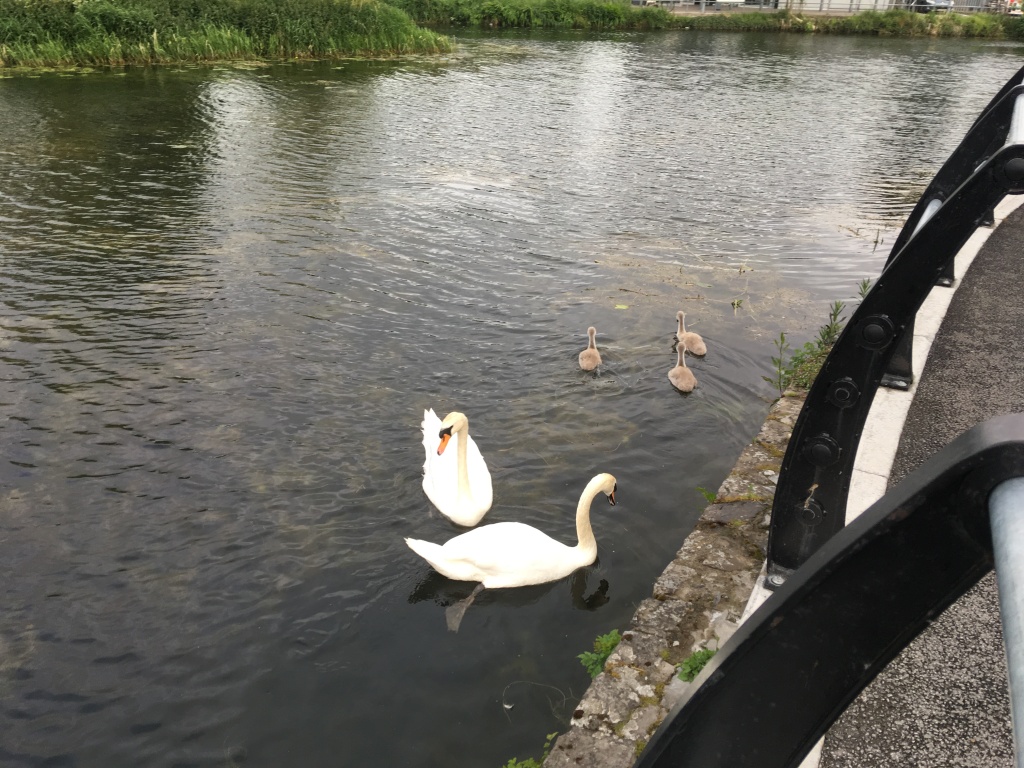
We depart Maynooth heading west on a tarmac path heading a short distance of 500 metres before we encounter Bond Bridge which was originally built in 1795. In 2005 Jons Engineering were contracted to widen and realign the bridge to make it safer for the traffic it carries over the canal. The new bridge opened in 2007 and also has cycle lanes over it with steps accessing the Royal Canal Greenway on the east side and a ramp down the west side.
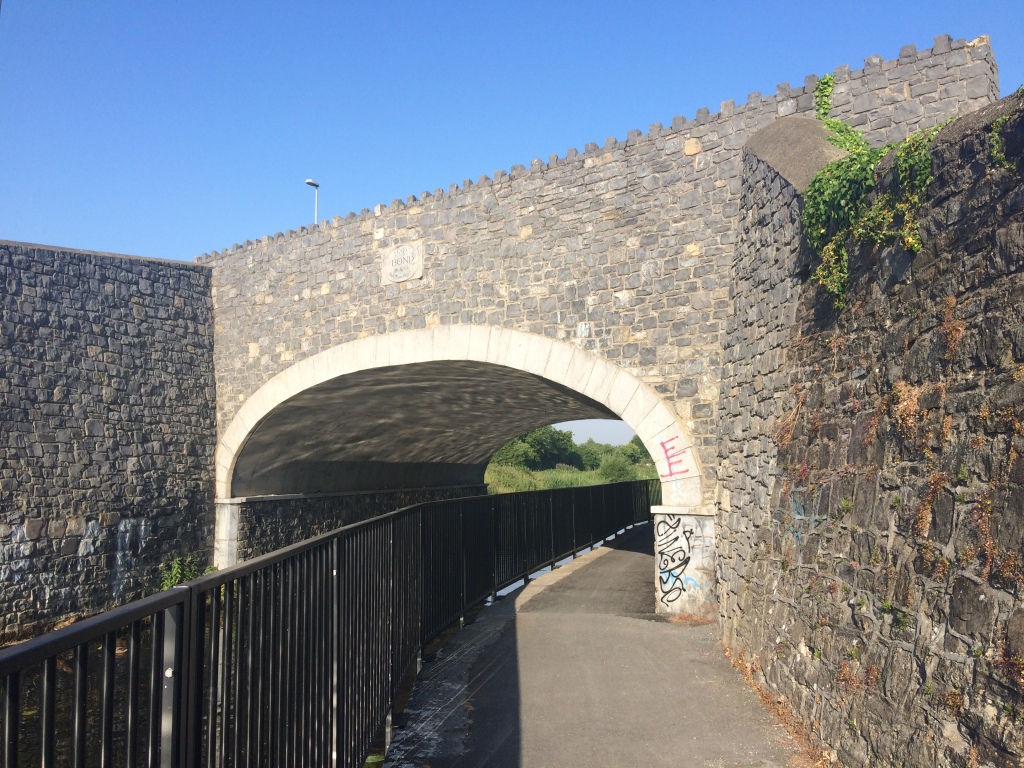
After passing under Bond Bridge we transition from tarmac onto a smooth, light stone dust surface which will be the norm for most the way to Enfield. The South Campus wall of the university keeps us company for 750 metres as we leave Maynooth behind us. This old stone wall separates the canal bank from the playing fields and grounds of the old campus.
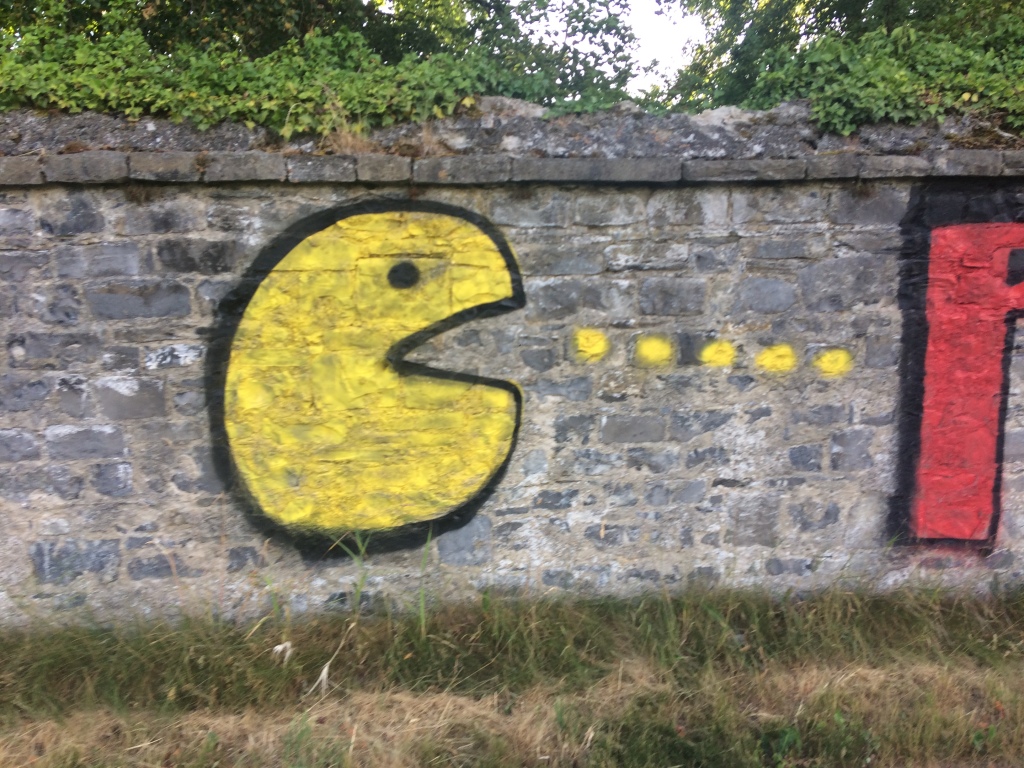
As we reach the end of the college wall we pass the old college farmhouse and sheds. It is nearly 1 kilometre from the end of the college wall to the next landmark of Jackson’s Bridge and the 14th Lock. Jackson’s Bridge is made up of 5 spanning arches including a narrow pedestrian arch (for which cyclists should dismount), the canal, the railway and two arches for farm animals on the south bank. The original canal span was built in 1793 while the railway span was abutted in the late 1840’s.

We emerge on the upper 14th level after passing through the pedestrian arch with the 14th Lock revealing itself fully to view.
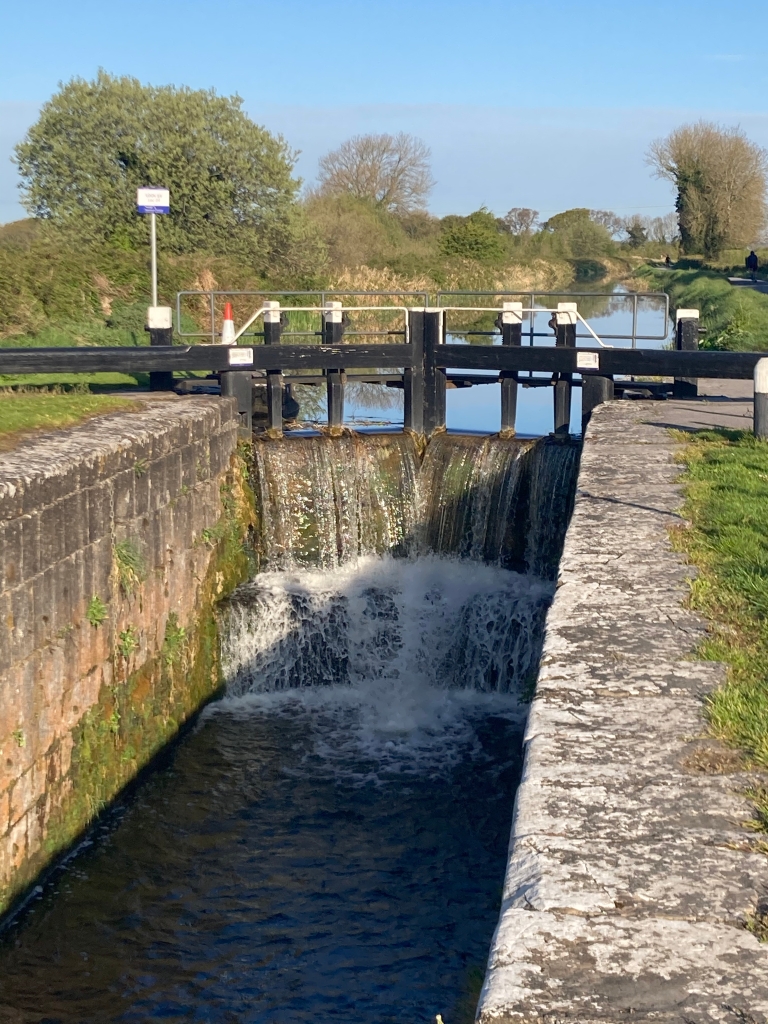
Leaving Jackson’s Bridge behind we proceed for 1.7 kilometres before we reach the next landmark of Bailey’s Bridge, an accommodation bridge giving the local farmer access to both sides of the canal. As part of the work to create the Royal Canal Greenway the bridge was extended to give users safe passage under the bridge rather than force them through the narrow passage that still exists.

Moving on past North Kildare Club with its rugby, cricket and hockey pitches it is another 750 metres to Chamber’s Bridge and the 15th Lock. It is common to find several barges and Waterways Ireland work boats moored up at the bridge. One such barge is Anam Cara (previously Maeve) which was once used by actors Timothy West and Prunella Scales in their Channel 4 series Great Canal Journeys as they explored the Shannon-Erne Waterway. The barge was also used for the TV3 series Jingle Jangle which featured a large array of prominent Irish musicians as the barge made its way west from Dublin to Cloondara on the Royal Canal.
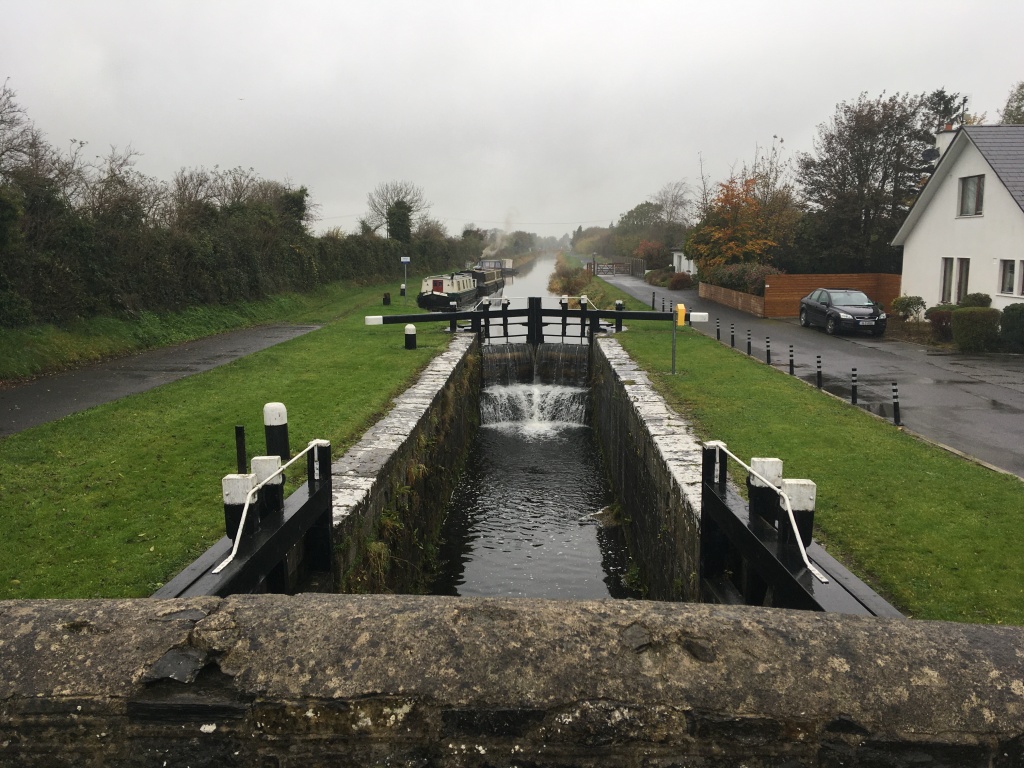
There is another 500 metres of the light stone dust after Chamber’s Bridge before we reach another stretch of tarmac on the approach to Kilcock. As we meet the tarmac, the Royal Canal Greenway lines up and runs parallel with a road, a railway, the canal, the greenway itself, another road and the Rye River. It is 1 kilometre from the start of the tarmac surface to Kilcock Harbour.

Kilcock Harbour has been wonderfully restored and is home to Kilcock Canoe Polo Club. The Royal Canal opened to commercial traffic in December 1796, six years after construction started. Barges initially started operating between Broadstone and Kilcock. At the end of Kilcock Harbour is the upgraded Shaw’s Bridge and the double-chambered 16th Lock.

In total it is just under 6 kilometres from Maynooth Harbour to Kilcock Harbour. As we must dismount to cross the road at Shaw’s Bridge, you may wish to stop for some refreshments before continuing on. Just across the road from the canal is the very popular Black Forest Cafe and Cakery while just a little further into the town there is a Costa Coffee as well as a large Supervalu for supplies. The Rye River Cafe is also another popular spot for breakfast or lunch not far off the canal.

After coming up onto the 16th level there is a small blue container. This marks the start of the Royal Canal parkrun, Kilcock which is a weekly, free 5k run that goes out west and comes back on the banks of the canal.
The tarmac continues from the 16th Lock for just over 1 kilometre as far as Allen Bridge which is known locally as Spins Bridge. Allen Bridge was originally built in 1796 but like Bond Bridge and Shaw’s Bridge, it was later modified for modern traffic. However when you pass under the bridge you can still see the original arch.

On coming out on the other side of Allen Bridge we return to the light stone dust surface. A new spillway has been completed not far west of the bridge which replaced a narrow wooden bridge over a dip of the old slipway.

As we continue west for 2.75 kilometres towards McLoughlin’s Bridge and the 17th Lock (which is locally known as Ferns Lock) we cross the county border from Kildare to Meath. The Royal Canal crosses back and forth across this county line several times as the canal makes its way west.

Ferns Lock has several features around it. The bridge coming into the lock no longer has an arch and now has a low concrete plinth which has been known to catch the top of wheelhouses of boats passing under it. This happened the Heritage Boat Rambler during filming of the late Dick Warner’s Waterways – The Royal Canal series for RTÉ. It is a rare complaint on the Royal Canal that the water level is too high for such problems to happen. Unlike all the bridges we have met so far, McLoughlin’s Bridge has no abutment to a railway bridge and instead is level with a level crossing at the bridge. The 17th Lock is the last double-chambered lock on the Royal Canal coming from Dublin and marks the start of The Long Level which is a 32 kilometer stretch before the 18th Lock at Thomastown. There is also a restored storehouse beside the lock, now a private residence.

Leaving Ferns Lock we remain on the north bank on one of the most recently completed sections of the Royal Canal Greenway. Until late in the summer of 2019 it was necessary to travel the 5.9 kilometre section from Ferns Lock to Cloncurry Bridge on the south bank. This is a grassy and often muddy trail generally unsuitable for cycling. Thankfully the north bank is now complete and is a pleasurable cycle. The new section does veer a little away from the canal at a few points but never too far to see and it includes a section where the path winds through a forest.

One of the few disadvantages of travelling on the smooth north bank now is that you miss the original 22 and 23 Mile Markers for the canal, 2 of the very few ones left standing. These measure the distance not from the River Liffey but rather from Broadstone.

Not long after the forest, we pass a farm house which leads us back onto a tarmac surface for the last 2 kilometers to Cloncurry Bridge. The area around Cloncurry is probably best known from the poem The Old Bog Road by Teresa Brayton, an Irish Nationalist from Kilcock who emigrated to America in 1895.

She wrote widely on the themes of exile, nostalgic loss of homeland, nationalism and religion. She returned to Ireland in 1932 where she lived in nearby Kilbrook until her death in 1943. The Old Bog Road was put to music by Madeline King O’Farrelly from Rochfortbridge in Westmeath and has been recorded by many artists.
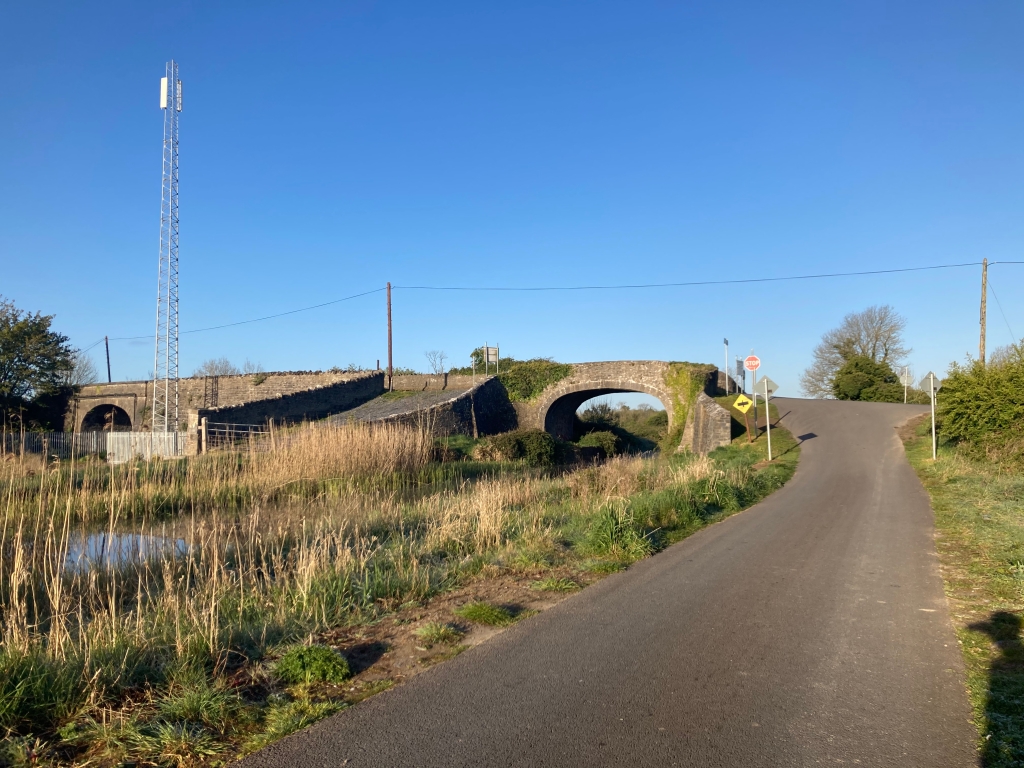
Remaining on the north bank we must cross over the road at Cloncurry Bridge to continue on our way to our destination in Enfield, a distance of 3 kilometres. Some caution is needed for the first kilometer of this as it is on a public road by the canal until you pass through a pair of wooden gates back onto the dust surface of the Royal Canal Greenway.

Coming into Enfield, the railway station and a variety of connected buildings originally opened by the Midlands Great Western Railway company in the late 1840’s can be seen on the opposite bank. Buildings include the Railway Station, the Station Masters House, Warehouses, a Signal Box and Water Towers. Finally we approach our destination of Enfield Bridge, 18.7 kilometres from where we started at Maynooth Harbour.
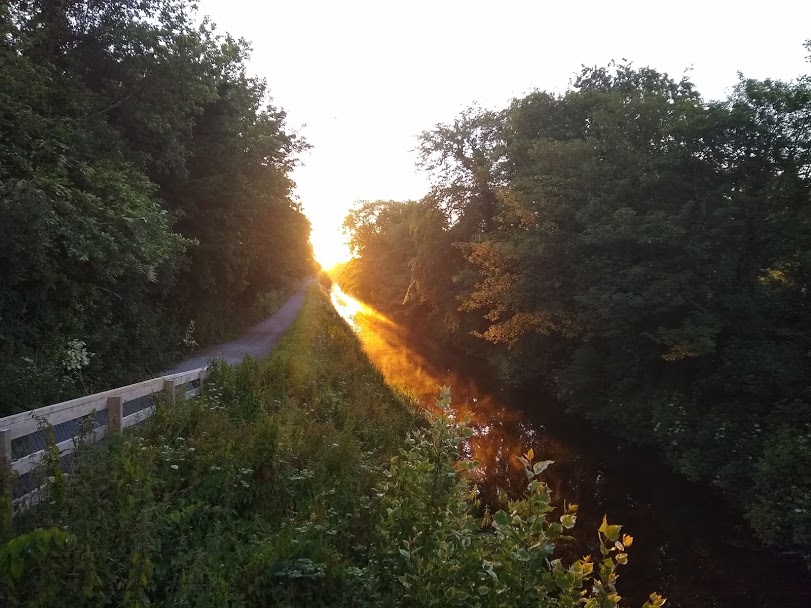
On reaching Enfield there are a variety of places to take a break. Closest to the bridge itself is the Bridgehouse pub which does pub grub. There is an Applegreen with a Subway just a little further into town for those only looking for light refreshments. A favourite of mine would be the Street Side Cafe. Like Maynooth and Kilcock, Enfield also has a Supervalu close to the canal for those looking for a supermarket. More recently The Koffee Well has opened in the centre of Enfield with a great outdoor space and bike parking. It is an ideal place to stop for a coffee and a slice of cake while out exploring the Greenway.

Once you are fueled again you’ll be ready for the cycle back to Maynooth or, if you are taking it easy, the intercity from Sligo stops in Enfield roughly every 2 hours and will see you back to Maynooth or Dublin Connolly. Booking with Irish Rail is advised with bike as the trains can only facilitate 2 bikes per train.

Part 1: North Wall to Cross Guns Bridge
Part 2: Cross Guns Bridge to Castleknock
Part 3: Castleknock to Leixlip Confey
Part 4: Leixlip Confey to Maynooth
Part 7: Thomastown to Mullingar Harbour
Part 8: Mullingar to Coolnahay
Part 9: Coolnahay to Ballynacargy Bridge
Part 10: Ballynacargy to Abbeyshrule
Part 11: Abbeyshrule to Ballybrannigan
Part 12: Ballybrannigan to the 41st Lock
Part 13: 41st Lock to Richmond Harbour
18 replies on “Royal Canal Greenway: Maynooth to Enfield”
Very inspiring I’m definitely going to cycle it this summer thanks for all the detailed information regards
LikeLike
[…] Part 5: Maynooth to Enfield […]
LikeLike
[…] Part 5: Maynooth to Enfield […]
LikeLike
[…] Part 5: Maynooth to Enfield […]
LikeLike
[…] Part 5: Maynooth to Enfield […]
LikeLike
[…] Part 5: Maynooth to Enfield […]
LikeLike
[…] Part 5: Maynooth to Enfield […]
LikeLike
[…] Part 5: Maynooth to Enfield […]
LikeLike
[…] Part 5: Maynooth to Enfield […]
LikeLike
[…] Part 5: Maynooth to Enfield […]
LikeLike
Thank you for your really useful and also beautifully presented site. Yesterday I took the train to Enfield and cycled back to Maynooth and I look forward to using your guides for more such trips on my trusty old high Nellie. The distance was good for me, and it was fine to stop in Kilcock, although next time I would go on to Maynooth and then look for a rest stop. I have free travel, so the train option is a privilege.
LikeLike
Just to say this is a really great, well-researched resource, and I plan to try to use it on my newly acquired hybrid bike this Winter.
LikeLike
Would the Gates coming into Enfield prevent a Hand Cyclist accessing the Route. I know his Normal Sit-up Wheelchair should get through, but his Hand Cycle Trike is over 2m long used for long distance Cycling. Hoping to bring a friend over from Australia there on Saturday, and a bit concerned he wouldn’t be able to access the route from Maynooth to Enfield, Thanks.
LikeLike
Unfortunately I know several hand-cyclists have had difficulty with the gates. From the best of my knowledge most them have enough room to get through if you are willing to do a bit of manoeuvring and if you look you may even find one of the gates is unlocked so that a person could open and close it behind the hand-cyclist if they are not alone.
However there is definitely one gate between Ferns (16th) Lock and Cloncurry Bridge at a farmhouse where there is a gate that is extremely narrow which restricts even the most agile cyclists so I would think that obstacle would stop you in your tracks.
As an alternative on a Saturday I would suggest starting in Enfield instead of Maynooth and heading west to Fureys at Moyvalley where you could get a decent feed and even press on as far as Longwood Harbour before coming back. I think that stretch is far less likely to cause you grief. The Koffee Well in Enfield is also a nice place, although it’s about 500m from the Trail Head of the canal.
Hope this is of some help.
LikeLike
Really appreciate that information. I will be cycling with my Friend on a Road Bike and he will be in his Hand Cycle Trike. I was in Enfield recently to do the Park Run and its a nice village, so ill take that advice and start there instead. The Issue i was highlighted on RTE news a while back after a Danish Cycle Lane planner, pointed out the Gates on some of the Greenways prevented Disabled people with Trikes or Wheelchairs accessing some routes. I emailed Greenways Ireland and Irish Waterways Ireland but they have not replied to date. I might take a spin on my bike from Enfield and take some photos of this Gate, and post it to the Irish Wheelchair Association so they can lobby local Authorities to fix these access issues.
LikeLike
Are you sure the village you are thinking of is Kilcock and not Enfield? Kilcock has a parkrun, Enfield doesn’t and the troublesome gate I mentioned is between Kilcock and Enfield. Just don’t want you going out and hitting a block you can’t pass. Unfortunately the issue of this particular gate has been raised several times and as far as I can ascertain it is on a piece of private land that only has a right of way, the path is narrowed to minimise the amount of space it uses on the land and it has been said that that is the reason the gate is so difficult. It really is a bottle neck in the Greenway because I’ve found generally most of the gates while inconvenient can be gotten around.
LikeLike
Sorry i was getting the towns mixed up alright. Yes it was Kilcock we ran the Parkrun in on a Saturday. Well definitely start the Cycle from Enfield based on the information you’ve given. We might also look at doing some of the Mullingar to Athlone Old Railway Greenway another weekend.
LikeLiked by 1 person
The Old Rail Trail is perfect for bike and Hand Cycles. The few gates at road areas have wide area, plenty of room to swing around. The only downside there is that there are very few places to pick up supplies so I’d suggest bringing a packed lunch or a picnic and you can stop at some of the old train station platforms for a snack that way!
LikeLike